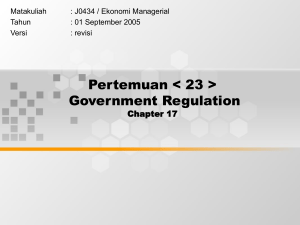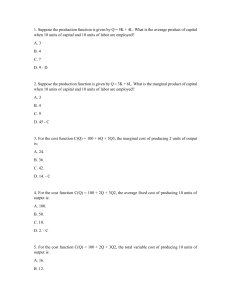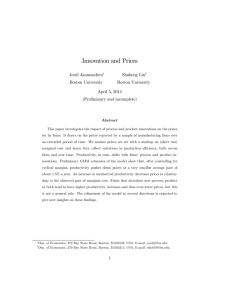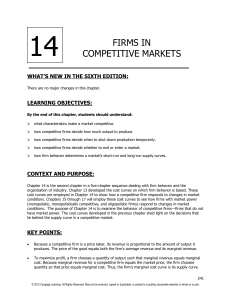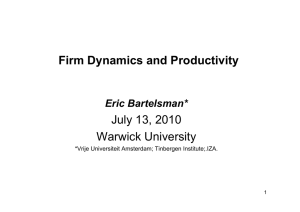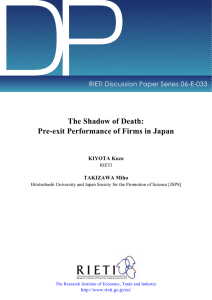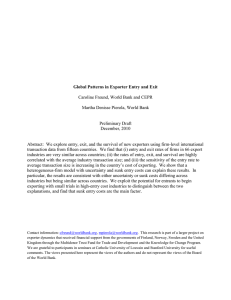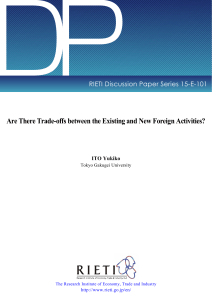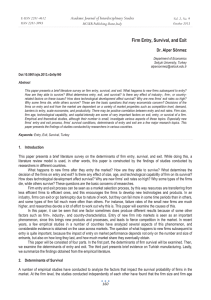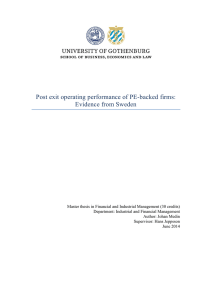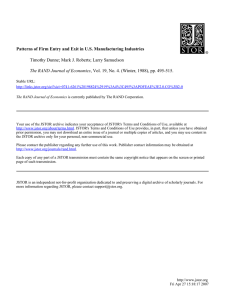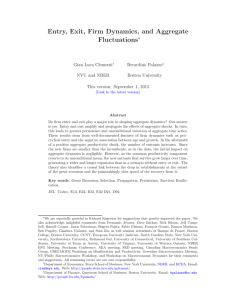Rose-Hulman Institute of Technology / Department of Humanities & Social... SV351, Managerial Economics / K. Christ
advertisement
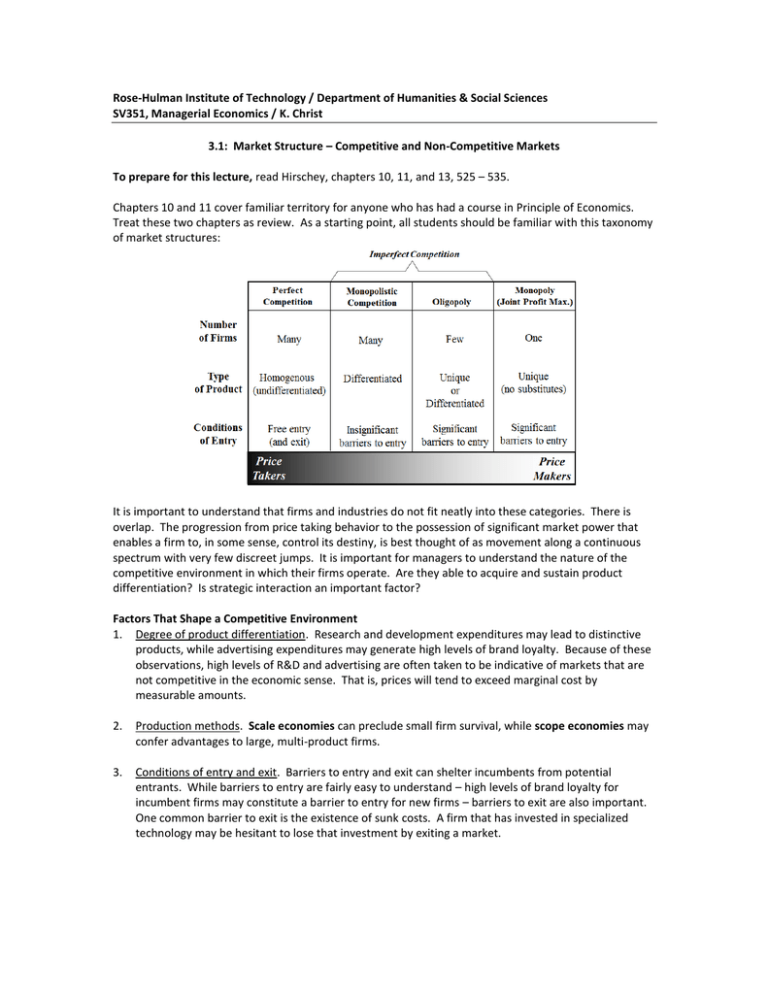
Rose-Hulman Institute of Technology / Department of Humanities & Social Sciences SV351, Managerial Economics / K. Christ 3.1: Market Structure – Competitive and Non-Competitive Markets To prepare for this lecture, read Hirschey, chapters 10, 11, and 13, 525 – 535. Chapters 10 and 11 cover familiar territory for anyone who has had a course in Principle of Economics. Treat these two chapters as review. As a starting point, all students should be familiar with this taxonomy of market structures: It is important to understand that firms and industries do not fit neatly into these categories. There is overlap. The progression from price taking behavior to the possession of significant market power that enables a firm to, in some sense, control its destiny, is best thought of as movement along a continuous spectrum with very few discreet jumps. It is important for managers to understand the nature of the competitive environment in which their firms operate. Are they able to acquire and sustain product differentiation? Is strategic interaction an important factor? Factors That Shape a Competitive Environment 1. Degree of product differentiation. Research and development expenditures may lead to distinctive products, while advertising expenditures may generate high levels of brand loyalty. Because of these observations, high levels of R&D and advertising are often taken to be indicative of markets that are not competitive in the economic sense. That is, prices will tend to exceed marginal cost by measurable amounts. 2. Production methods. Scale economies can preclude small firm survival, while scope economies may confer advantages to large, multi-product firms. 3. Conditions of entry and exit. Barriers to entry and exit can shelter incumbents from potential entrants. While barriers to entry are fairly easy to understand – high levels of brand loyalty for incumbent firms may constitute a barrier to entry for new firms – barriers to exit are also important. One common barrier to exit is the existence of sunk costs. A firm that has invested in specialized technology may be hesitant to lose that investment by exiting a market. Rose-Hulman Institute of Technology / Department of Humanities & Social Sciences / K. Christ SV351, Managerial Economics / 3.1: Market Structure Measuring the Competitive Environment Although market concentration may be an extremely poor proxy for the level of competition, measures of concentration are nevertheless often used by policy makers to support conjectures about how competitive markets really are. 1. Concentration Ratios (C4 or C8) This is the simplest metric of concentration. 2. Herfindahl-Hirschmann Index (HHI) One important aspect of the HHI is that it is the metric used in the U.S. Department of Justice’s Horizontal Merger Guidelines for evaluating the potential anti-competitive effects of mergers. 3. Lerner Index Often used as a proxy for a degree of monopoly power, it is also known as a pricecost margin. Its relevance rests upon the definition of monopoly or market power as “an ability to raise and sustain price above marginal cost”. In reality, because marginal costs are very difficult to measure, its practical usefulness is limited. Red Queen Competition Video lecture: William Barnett, “Red Queen Competition: A Dynamic View of Strategy”, Stanford Executive Briefings. In this guest lecture, Professor Barnett presents an alternate view to the standard neo-classical model of competitive market equilibrium. Focusing instead on the disequilibrium of competitive environments, he employs the image of “running faster just to keep up” to explain the nature of competitive environments that many firms find themselves in today. Key concepts: Red Queen competition (dynamic competition) Capabilities advantage Positional Advantage Relevant Textbook Problems: 10.6, 10.7, 10.8, 10.9, 10.10, 11.5, 11.6, 11.10






